Once upon a time in ancient Java when Hinduism flourished, the story of a mighty bird who saved his mother from slavery lived on – a tale of how far a son would go, even putting his own life at risk, to end his mother’s suffering. Legend has it that a rishi (sage) called Kasyapa lived in reclusion with his wives: Winata and Kadru. The two women were in fact sisters, but they competed against each other to win their husband’s attention. Both of them were very desperate to have children for they believed their offspring would bring Kasyapa closer to them. One day a god came and gave both of them eggs, two for Winata and a thousand for Kadru. The god told them to take good care of the eggs he had entrusted them, and both women willingly obliged.
As time went by, serpentine creatures called the Nagas hatched from Kadru’s eggs. Winata, growing uneasy as none of her eggs had hatched yet, cracked one egg open only to find a child whose lower body parts had not yet developed. The prematurely-hatched son was so furious he cursed his mother to be enslaved by Kadru one day. Later on Kadru and Winata were involved in a life-changing gamble where whoever lost would become a slave of the winner. Cheating her way into winning the absurd bet, Kadru successfully forced Winata to become her slave. As Winata’s distressing days began, her second egg hatched and a mighty bird called Garuda emerged. He looked for his mother only to find out about her enslavement by her own sister. He then came to the Nagas and asked them what he could do to free his mother. There was indeed a way for Garuda to save Winata, but it appeared to be an almost impossible task, a suicidal mission to be precise, as he had to bring the Nagas tirta amerta (amrita), or the elixir of immortality.
To get to the elixir, Garuda had to fly to the abode of gods, a heavily-guarded realm above the sky. A ring of fire was the first obstacle he had to overcome. He collected water from many rivers into his mouth and extinguished the fire with it. But then came the second trap: a mechanical contraption of sharp rotating blades. Garuda shrank his body and crept past the blades unscathed to finally reach the elixir which was guarded by two gigantic snakes. He managed to defeat them and took the elixir straight to the Nagas. On his way back to earth, he encountered Vishnu who, instead of fighting the brazen thief, offered a deal to Garuda: he could make the bird immortal even without drinking the elixir, but in exchange Garuda had to agree to become Vishnu’s mount. After agreeing to the deal, Garuda moved on and presented the Nagas with the elixir, securing Winata’s release from slavery.
* * *
In 13th-century Java, when the island’s political and cultural center gradually shifted to the east, a series of bloody power struggles took place as a new kingdom rose to prominence. Ken Arok, an attendant to Tunggul Ametung, the ruler of Tumapel – one of two main powers in the east of Java – killed his master with a keris (Javanese traditional dagger) and took Ken Dedes – Tunggul Ametung’s wife – as his own. Her beauty was often compared to Pradnya Paramita (Prajnaparamita), the Perfection of Transcendent Wisdom in Mayahana Buddhism, so much so that a man was willing to kill to get her. Soon Ken Arok proclaimed himself the new ruler of Tumapel and waged a war against Kediri, another regional power, which he won. He then founded a new kingdom called Singhasari (Singosari), whose dominance would encompass regions far from its capital in the heart of eastern Java.
After ruling his kingdom for five years, Ken Arok’s reign was brought to an abrupt end when Anusapati – Ken Dedes’ son with Tunggul Ametung – avenged his father’s death and stabbed Ken Arok with the same keris the king used to kill Anusapati’s father. Anusapati then ascended the throne and became Singhasari’s second king. His rule lasted for more than two decades and dramatically ended at the hand of Panji Tohjaya – Ken Arok’s son – who killed the king also with the same cursed keris. Upon his death, a mortuary temple was constructed for Anusapati, a beautiful work of art known today as Candi Kidal. At the base of the temple, exquisitely-carved reliefs depict the story of Garuda’s quest for tirta amerta to save his mother from slavery, purportedly picked to symbolize Anusapati’s struggle to free his mother from the hands of Ken Arok. Considered a prototype of East Javanese architecture, the temple bears the usual menacing Kala – the guardian of a temple’s sanctum – but with a distinctively East Javanese style: fanged with two raised fingers on each hand, a gesture believed to thwart evil spirits.
Panji Tohjaya ascended the throne and became Singhasari’s third king, albeit only for a few months. The new ruler, upon realizing the possible threats from Ranggawuni – Anusapati’s son – and his nephew Mahisha Champaka (a grandson of Ken Arok), instructed his bodyguard, Lembu Ampal, to kill the two princes. However, instead of obeying the king’s order, Lembu Ampal helped Ranggawuni and Mahisha Champaka stage a revolt which forced Panji Tohjaya to abdicate. The two princes then ruled together, with Ranggawuni taking the name Wisnuwardhana and Mahisha Champaka as Narasingamurti, effectively bringing the long bloody feud between the families of Tunggul Ametung and Ken Arok to an end. The pair ruled together for two decades until Wisnuwardhana’s death. Kertanegara, Wisnuwardhana’s son, then ascended the throne and ruled Singhasari for more than 20 years. Under his rule, the kingdom reached its peak with its sphere of influence spreading out to Sumatra, the Malay Peninsula and the remote islands to the east.
In the year of Wisnuwardhana’s death, a new Hindu-Buddhist temple was commissioned to pay homage to the deceased co-ruler of Singhasari. Believed to be around 15 meters in height upon its completion, Candi Jago, as the ancient temple is known today, now stands only partially-restored since it lacks too many original stones for complete restoration. Built as a three-tiered structure, Candi Jago (originally called Jajaghu, which means “greatness”) was adorned with ornate reliefs depicting Hindu and Buddhist stories suggestive of the Tantric syncretism of Hinduism and Buddhism practiced in Singhasari. On the lowest terrace the stories of Kamandaka and Kunjarakarna (both native to Java) emphasized the importance of being a good person in society. Upstairs, the stories of Parthayajna and Arjunawiwaha from the Hindu epic Mahabharata were carved around the second terrace with the latter also depicted on the third terrace of the temple. Elsewhere at the temple the story of Krishna’s fight against Kalayavana was added to the already richly-embellished monument.
Following the curves of coconut trees, tall and slender figures, and epic battle scenes immortalized on the relief panels at Candi Jago, I explored the exquisite temple’s walls and noticed pavilions and towering temples which are also depicted at Candi Penataran. The remarkable resemblance of those structures with what people can see today on the island of Bali is astonishing, a testament to the living ancient culture on the Indonesian “Island of the Gods.” In front of Candi Jago, a supposedly big statue was conspicuously absent on top of a large pedestal encrusted with lotus petals. Not far from it, a headless eight-armed Amoghapasa was flanked by two fallen Kalas. Today Candi Kidal and Candi Jago serve as a reminder of Singhasari’s highly-skilled sculptors who continued the longstanding tradition of stone sculpting in Java that had brought the stories of Hindu epics and Buddhist teachings to life on numerous temples across the island.
Under the rule of Kertanegara, Singhasari flourished in the decades that followed Wisnuwardhana’s death. The new king brought his kingdom to its peak, influencing lands far away from Java, which was exactly the reason for a powerful nomadic empire from the far north to covet the Java-based kingdom as part of its growing realm. Suddenly Singhasari faced the most critical moment in its history.
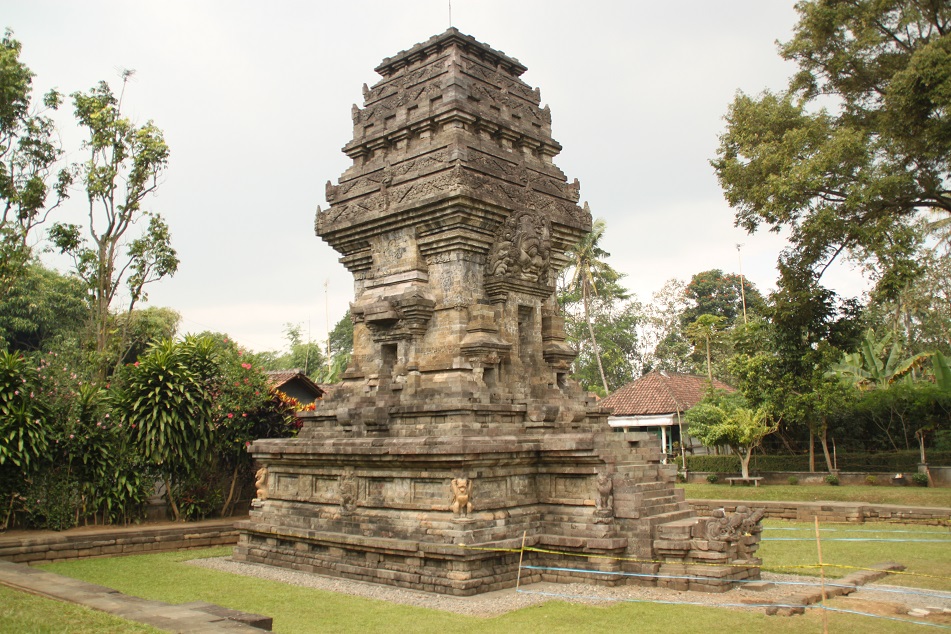
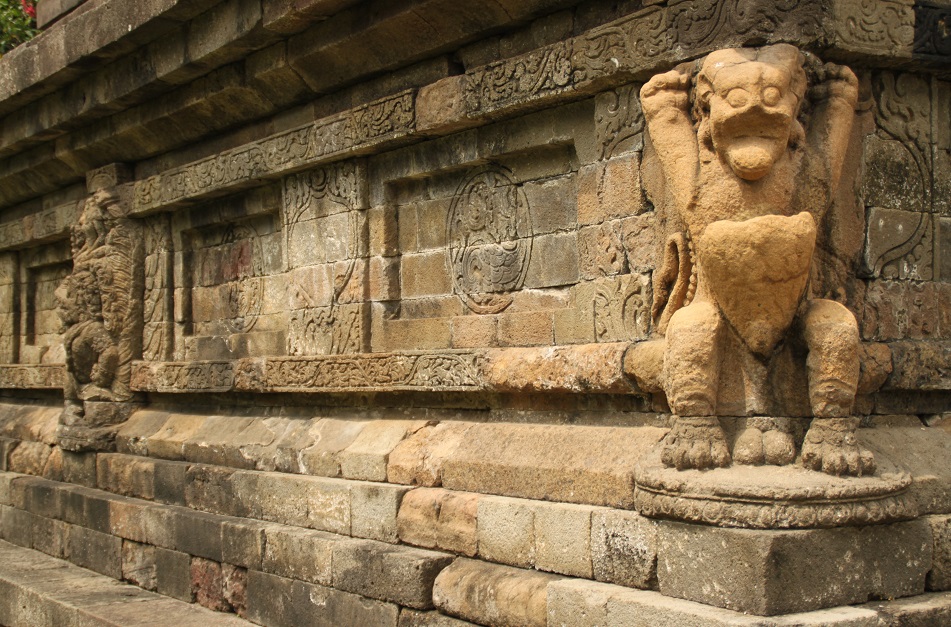
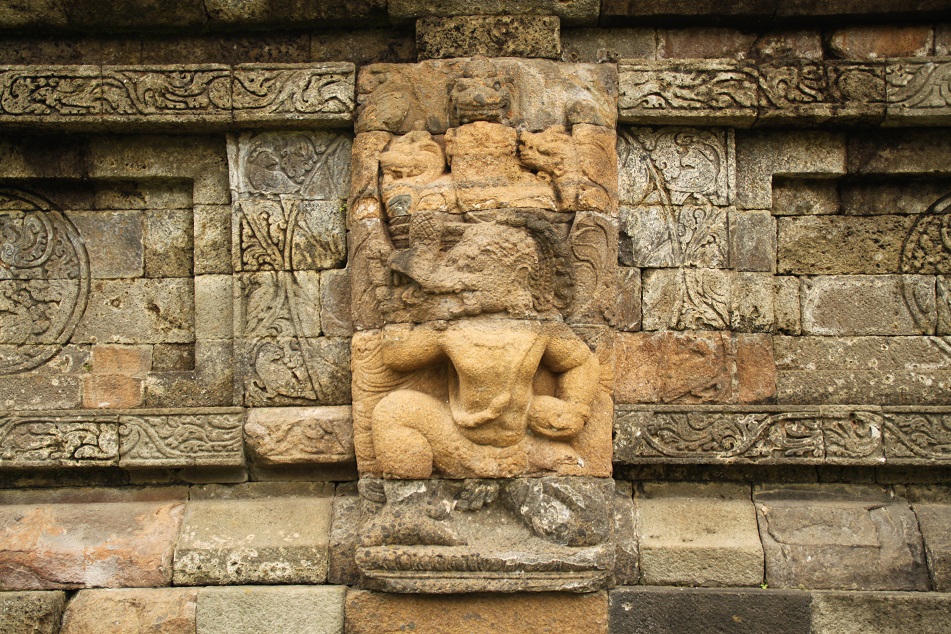









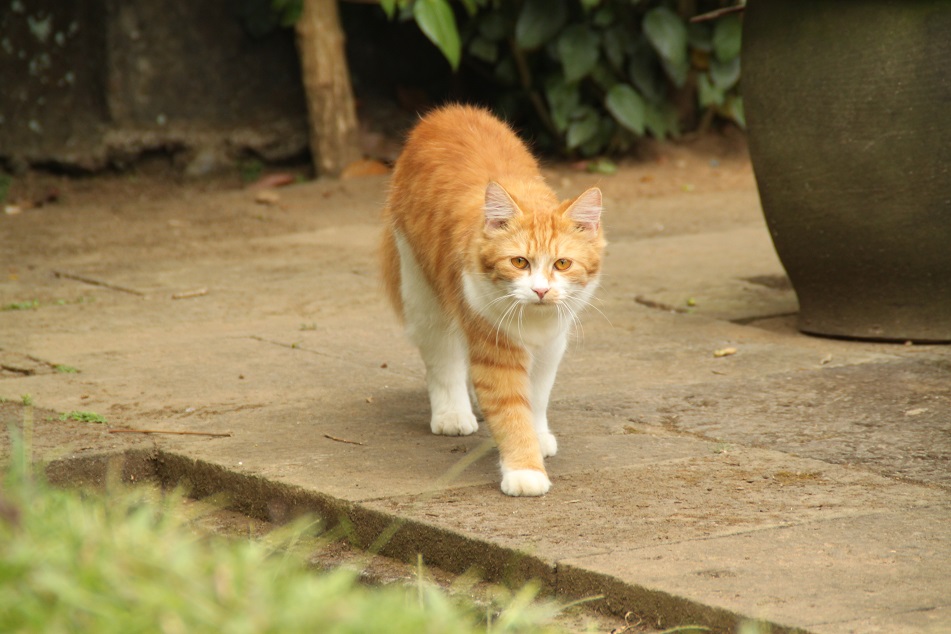






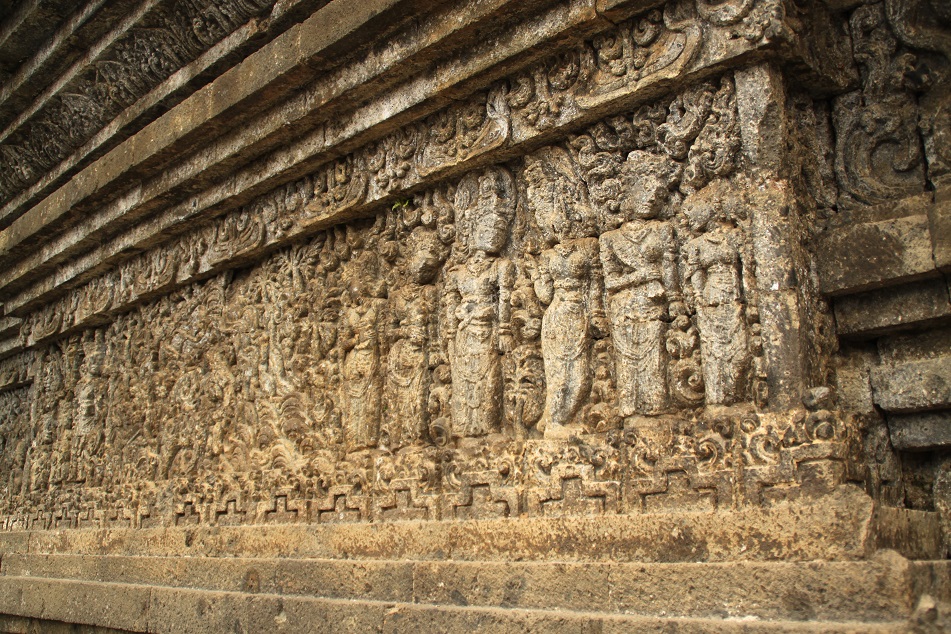
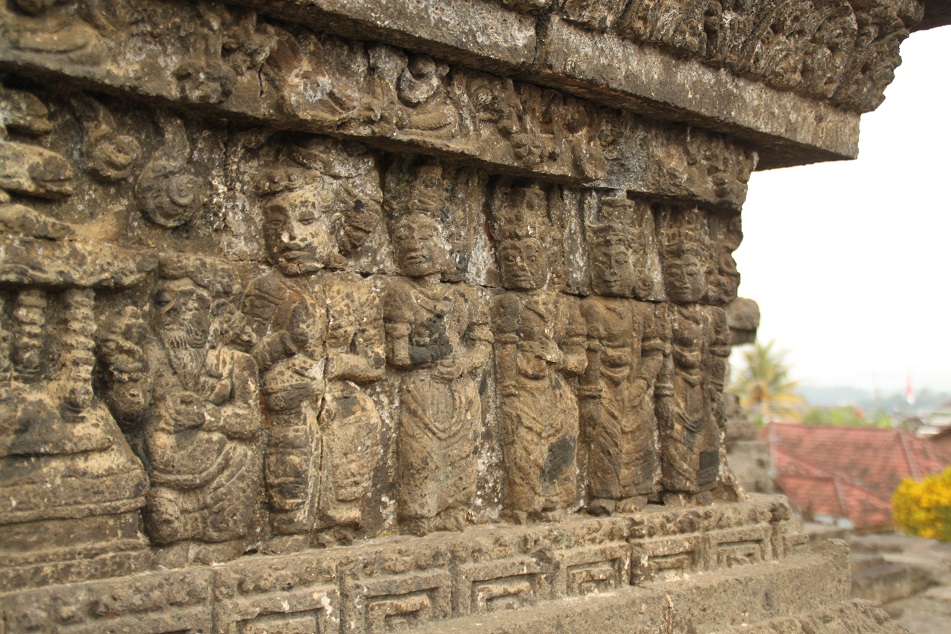
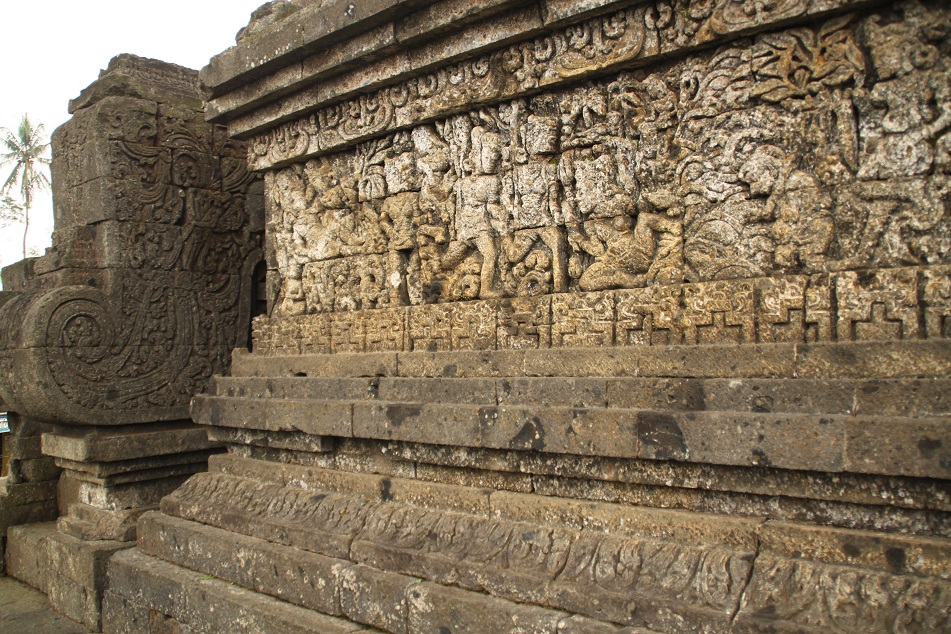




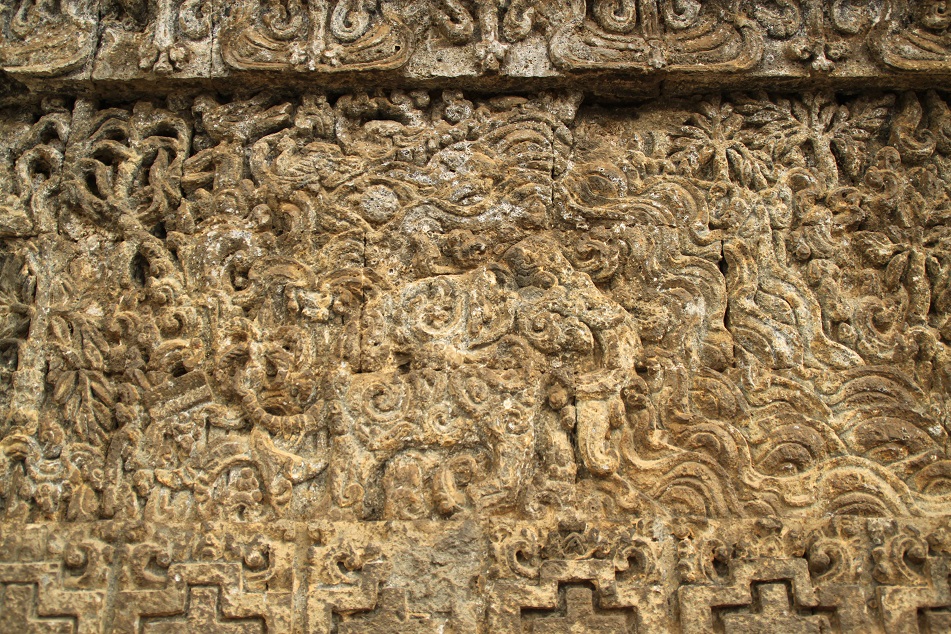



I bookmarked this post for rereading it for greater attention to the fascinating story. Great photos of the rich cultural background of the island of Java.
LikeLike
Really appreciate that, Peter! Kingdoms and empires all over the world had their own power struggles. But the ones Singhasari went through were particularly bloody and complicated. The atmosphere of vengeance must have been very palpable back then!
LikeLiked by 1 person
Great post to read Bama! But wait, the orange fluffy ball is melting my heart 😀
LikeLiked by 1 person
Thanks Anne! The cat was really adorable! Not only did he follow me as I walked around the temple, but he also let me carry him — although for not too long.
LikeLiked by 1 person
Legenda Winata dan Kadru jadi pembuka kisah dinasti Ken Arok dan Ken Dedes yang epik, Bama. Like it. 😀
Ken Arok ini menjadi dinasti yang selalu dikisahkan kesuramannya. Namun, keseluruhan dinasti berikutnya di Jawa seolah berebut tahta juga berdasarkan garis keturunannya. Awal tragis yang ironisnya selalu menjadi pencontohan kehancuran dinasti-dinasti penerusnya. Wanita, harta, dan kekuasaan adalah fana yang selalu dirindu sang raja di kursi emasnya. 🙂
LikeLike
Terima kasih, Halim. Intrik yang meliputi raja-raja Singosari dan pergolakan yang terjadi di masa-masa akhir kerajaan ini menurut saya cocok dibikin film epik semacam Lord of the Rings gitu. 🙂 Salah satu cara yang bisa membuat semakin banyak orang tertarik untuk belajar sejarah, menurut saya sih.
LikeLiked by 1 person
Nice photos
LikeLike
Thanks Sisir!
LikeLike
Wonderful pictures! Makes me want to tour Java again.
LikeLike
Thanks! How long did you explore Java in your latest trip to the island? Despite being the world’s most populous island, Java remarkably still has pockets of unspoiled natural beauty and intriguing monuments from the distant past.
LikeLiked by 1 person
I visited 3 years ago. Such a magical place!
LikeLiked by 1 person
Vivid pictures. The place has come alive in them.
LikeLike
Much appreciated, Tuli! It’s really hard not to be impressed by those temples, not only because of their history, but also for their exquisite carvings.
LikeLiked by 1 person
terpesona dengan ukiran2 yang terpahat di dinding candi, cantik dan sangat khas sekali dibanding daerah lain. satu yang menggelitik, sekilas relief kala di pintu masuk, mirip sedang berpose dua jari kanan kiri khas jepang, peace heheheh
LikeLike
Betul. Setiap kali saya eksplor candi-candi yang sebelumnya belum pernah saya datangi, daftar candi yang ingin saya kunjungi malah bertambah panjang. Di Indonesia masih ada Candi Bahal, Muarojambi, Muara Takus, dan candi-candi di Jawa yang jumlahnya sangat banyak itu. Bahkan hingga saat ini pun masih ada saja candi yang baru ditemukan setelah terkubur ratusan tahun lamanya. Mengenai kala dengan dua jari, memang untuk kita sekarang lebih mengasosiasikan dua jari dengan tanda peace atau victory sih. 😀
LikeLiked by 1 person
iya…termasuk candi baru di temanggung, lereng gunung sindoro dan juga penemuan kala di jawa timur berukuran tak biasa…
LikeLike
Yang saya paling penasaran itu Situs Adan-Adan, karena arca dwarapala berdiri dan pahatan-pahatan lainnya yang ditemukan berukuran besar. Dari yang saya baca di website-nya Puslit Arkenas, diperkirakan Situs Adan-Adan ini adalah candi yang belum selesai dibangun. Tapi tetap saja sih, bikin penasaran. 🙂
LikeLiked by 1 person
oh namanya situs adan adan tho…baru tau…iya memang masih menjadi misteri…semoga makin banyak ditemukan lagi yang lainnya biar bisa terungkap
LikeLiked by 1 person
I enjoyed the read thoroughly! 👍🏼 thanks Bama
LikeLike
Glad you did! Thanks for reading!
LikeLiked by 1 person
The level of detail in those intricate carvings is just astounding. Bama, it’s strange how such palace intrigue/violence and a flowering of art can go hand in hand – reading your account makes me wonder if Singhasari has been represented in an epic movie or TV series. Candi Kidal was easily my favorite of the handful of temples we visited around Malang, and I am glad that so much of it has survived through the centuries. As for Candi Jago, it was already impressive in its ruined state, but it must have looked even more majestic in its heyday.
LikeLike
Can you imagine a movie on Singhasari made at a Hollywood scale, with all those special effects and drama? I only learned about these candi in recent years, and I’m glad I stumbled upon whatever article or blog post it was that provided me with a glimpse of East Java’s ancient temples. When I was in primary school, I remember reading about all those temples in and around Jogja, the ones in Central Java, even Muarojambi and Muara Takus, but I don’t recall Candi Jago or Candi Kidal. Of all the temples we went to near Malang, Candi Kidal was also my favorite for its unique story of Garudeya — and Mino (or Bino) of course!
LikeLiked by 1 person
What an incredible place with so much history and legend. So beautiful!
LikeLike
Hi Nicole! These ancient temples, albeit lesser known, were truly magnificent. The relief carvings were just so astonishing!
LikeLiked by 1 person
Woderful post Bama. I really enjoyed it. My love for architecture and search for older civilization will surely take me there also some day.
LikeLike
Thank you for reading! We both surely have a penchant for all things ancient. Visiting these temples, as well as the more famous ones in Indonesia, really should be on your wishlist! 🙂
LikeLiked by 1 person
Wonderful history, legends and images. I do like the cat too 🙂
LikeLike
Thanks! Visiting these temples was really fascinating, and I don’t mind going back — hopefully the weather would be better and the cat would still be there by then!
LikeLike
Wonderful post!
And I just realized where the Americans got their air quotes.
LikeLike
aku kagum terus kalau lihat candi, ukiran dan pahatannya detil. itu kucing kayaknya peliharaan, soalnya terawat.
LikeLike
Sama, alasan kenapa saya suka banget berkunjung ke candi-candi karena menakjubkan aja melihat ukiran-ukiran di batu yang dipahat ratusan, bahkan lebih dari 1.000 tahun yang lalu. Nah, soal si kucing, memang betul dia peliharaan salah satu warga di sana. Pengen rasanya saya bawa pulang kucingnya. 😀
LikeLike
gak boleh mas bawa kucing itu pulang.. soalnya udah ada yang pelihara… bawa aku aja pulang *eh..
LikeLike
😀 😀
LikeLike
The stone carvings in many Asian historical ruins is beyond exquisite! Your beautiful photos of Candi Kidal put me in mind of Siem Reap temples and the Ajanta caves in India. I enjoyed your recounting of Garuda’s tale and the pathos filled ways in which it was echoed in your recounting of dynastic power struggles in 13th century Java.
LikeLike
From India to Indonesia, Vietnam to Sri Lanka, Asia really is home to among the most exquisite and magnificent ruins in the world — although those in Mexico, Ethiopia, Peru and the Middle East also have been on my wishlist for a long time! The symbolism from Garuda’s story was a fitting choice to depict Anusapati’s own life, indeed. Whoever proposed that particular story to be carved on Candi Kidal was really brilliant!
LikeLiked by 1 person
Interesting detail about Kala and the two raised fingers. I’ll be looking for that more now that you’ve explained it. I also enjoyed the story of Garuda — especially since Indonesia’s airline is of the namesake. Happy New Year, Bama!
LikeLike
Ahh you noticed the airline! I remember when I was in Bangkok on my second solo trip abroad, a guide in Wat Phra Kaew was explaining to a group of European tourists about Garuda. Then she mentioned about Garuda Indonesia to them. Did you know that in Bali a giant statue of Vishnu astride Garuda have been planned for many years. So far only Vishnu’s head, torso, and hands, as well as Garuda’s head have been completed. The finished monument will be so imposing some Balinese believe it will destroy the balance of the island. Thanks for reading, Kelly, and Happy New Year!
LikeLike
I know I sound like a broken record, but I continue to be awed and astounded by the level of detail in the carvings from so many centuries ago. (Oh, and I loved the vibrant orange kitty against that stone!)
LikeLike
I hope my readers won’t be bored either of my fascination toward carvings made by those who lived long before our time. 🙂 Please bear with me as the next post will still be on some ancient temples around Malang, then after that Melbourne!
LikeLiked by 1 person
Beautiful.
LikeLiked by 1 person
Indeed they are!
LikeLike
amazing….seriouly it’s damn good!!!
LikeLike
Glad you enjoyed this post. Thanks for reading!
LikeLike
Thanks for sharing
LikeLike
Et merci pour la lecture!
LikeLike
Pingback: Singhasari: Rise and Fall | What an Amazing World!
Pingback: Javanese Royal Palaces: Surakarta | What an Amazing World!
Pingback: Trowulan: An Ancient Javanese City | What an Amazing World!
Pingback: Ngawen & Losari: Temples on the Outskirts of Jogja | What an Amazing World!